Military might, cultural diversity awe audience at 71st Republic Day parade

Mail This Article
New Delhi: Brazilian President Jair Messias Bolsonaro on Sunday joined a select group of world leaders to have graced India's Republic Day celebrations in the past few decades.
Bolsonaro, as the chief guest at the 71st Republic Day celebrations, watched the colourful parade at the majestic Rajpath along with President Ram Nath Kovind, Prime Minister Narendra Modi and a host of other leaders.
This is the third time that a Brazilian President was the chief guest at the Republic Day. The last time a Brazilian President was the chief guest was in 2004 when Luiz Inacio Lula da Silva attended the parade.
President Bolsonaro held talks with Prime Minister Narendra Modi on Saturday after which India and Brazil inked 15 agreements to ramp up cooperation in a wide range of areas, including oil and gas, and unveiled an action plan to further broadbase their strategic ties.
This is the first visit of President Bolsonaro to India after he assumed office on January 1, 2019.
Invitation to President Bolsonaro had drawn criticism from certain quarters with questions raised over a "controversial" figure like him being chosen to be the chief guest at the Republic Day parade.
Asked about the issue, Secretary (East) Vijay Thakur Singh had said last week that he is an elected leader in a democratic country which is an emerging power in the region and one with which India has strong and substantive relations.
PM Modi pays homage to fallen soldiers
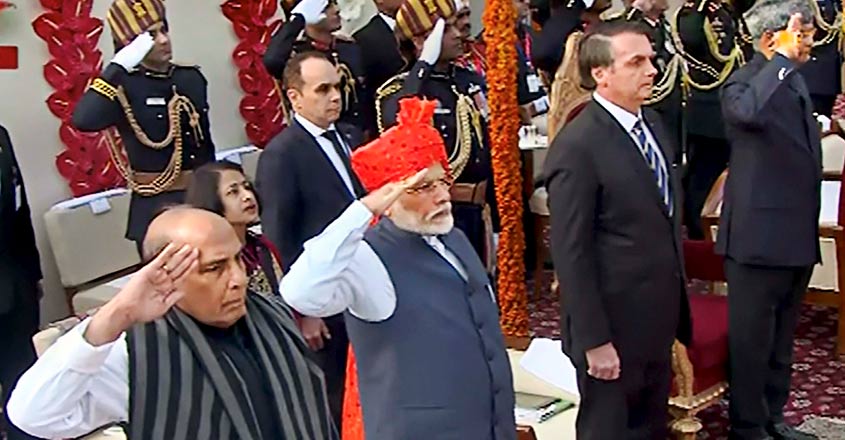
Prime Minister Narendra Modi on Sunday paid homage to the fallen soldiers at the newly-built National War Memorial here on the Republic Day for the first time instead of the Amar Jawan Jyoti beneath the India Gate arch.
The iconic memorial in the India Gate complex behind the canopy was inaugurated by Prime Minister Narendra Modi on February 25 last year.
The memorial is dedicated to soldiers killed during the Indo-China War in 1962, Indo-Pak Wars in 1947, 1965 and 1971, Indian Peace Keeping Force Operations in Sri Lanka and in the Kargil Conflict in 1999, and also those in the UN peacekeeping missions.
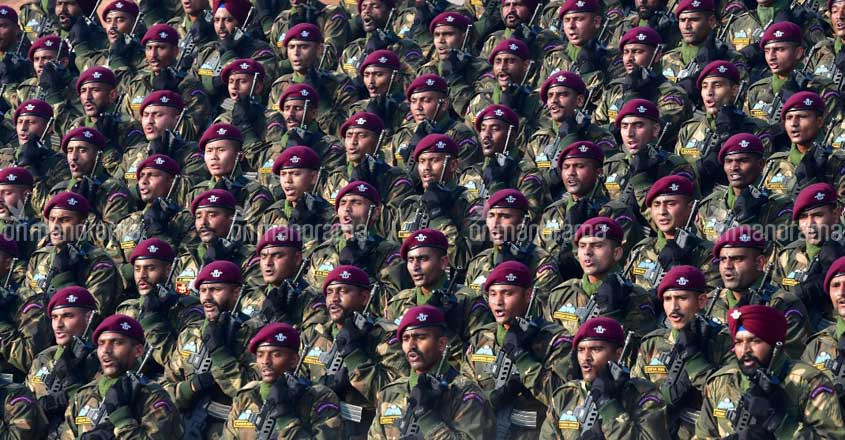
Tableaux show India's vibrant culture
Goa's 'save the frog' campaign, Jammu and Kashmir's 'back to village' programme, architectural wonders and UNESCO world heritage sites in Jaipur and Gujarat and 550th birth anniversary of Sikhism founder Guru Nanak Dev were thematically showcased among the host of tableaux in the 71st Republic Day Parade on Sunday.
Jammu and Kashmir, which participated in the parade for the first time as a Union Territory, had the "Back to Village'' programme as theme for its tableau.
The rich sartorial and cultural heritage of the region was depicted in the tableau with a shawl weaver in the front. The flora and fauna were shown in the middle complemented with Dogra and Kashmiri folk culture.
Out of the total 22 tableaux, 16 were of various states and UTs and six of ministries, departments and the National Disaster Response Force (NDRF).
The Walled City of Jaipur, which was accorded the UNESCO World Heritage tag in 2019, was the overriding theme of the Rajasthan tableau, depicting the Pink City's architectural grandeur and the state's vibrant culture reflected in its folk songs and dances.
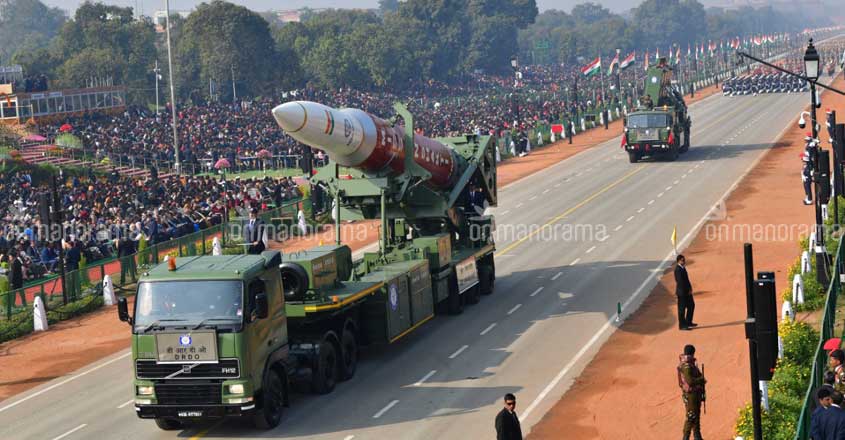
The 550th birth anniversary of Guru Nanak Dev in 2019 was the theme of the Punjab's tableau in the parade.
The Sikhism's architectural and cultural heritage was portrayed in the tableau, with messages 'Kirat Karo', 'Naam Japo' and 'Vand Chhako', which form the cornerstone of the Sikhism, depicted in panels.
Gujarat's architectural wonder Rani Ki Vav was the centrepiece of the state's tableau, complemented with folk culture and dances performed by artistes.
Rani Ki Vav or Queen's Stepwell initially built by Rani Udayamati as a memorial to her husband King Bhimdev I in the 11th century in Patan district of the state was inscribed into the UNESCO World Heritage List in 2014.
The majestic architecture of the stepwell was showcased in the tableau that was fronted by a statue of a village woman wearing Patola saree of Patan.
Other states which took part in the grand parade were Chhattisgarh, Tamil Nadu, Telangana, Himachal Pradesh, Madhya Pradesh, Goa, Andhra Pradesh, Odisha, Uttar Pradesh and Karnataka.
Cutting-edge technology and instruments used by the the National Disaster Response Force during rescue operations in flood-hit areas and Delhi's Anaj Mandi inferno last year were showcased in the NDRF tableau.
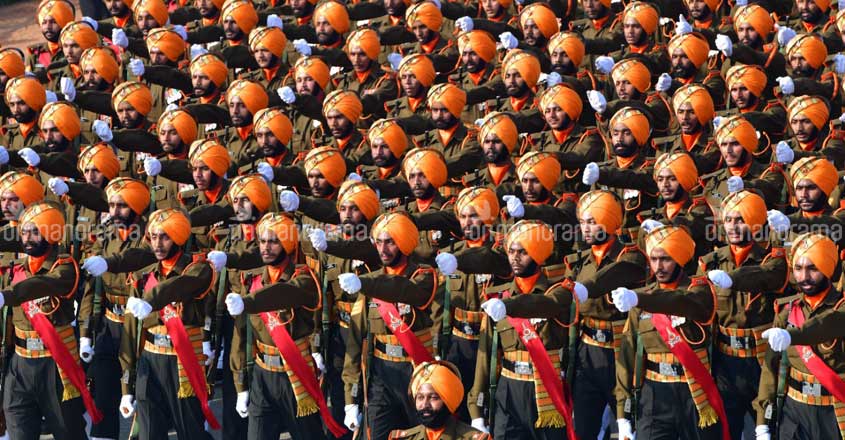
DRDO displays A-SAT weapon system
The DRDO Anti-Satellite (A-SAT) Weapon System was on display at Rajpath in the parade.
With space becoming a vital dimension of any country's economic and military superiority, A-SAT (Anti-Satellite) weapons play a critical role in providing the necessary strategic deterrence.
In March last year, the Defence Research Development Organisation (DRDO) launched 'Mission Shakti', India's first A-SAT mission and demonstrated its anti-satellite technology.
A live orbiting satellite in the Low Earth Orbit (LEO) was destroyed in a "Hit to Kill" mode with 10 centimetre accuracy, with the satellite and the missile approaching each other at a high speed of nearly 11 km per second.
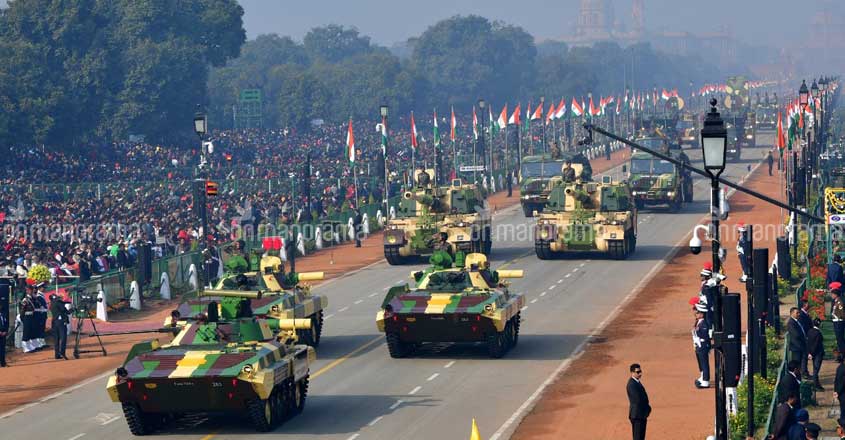
The covert technology of 'hit to kill', developed for the first time by India for such applications, enables it to destroy an enemy satellite by directly colliding with it with pin-point accuracy.
The successful demonstration has placed India at par with the elite club of three nations -- US, Russia and China -- that possess this capability.
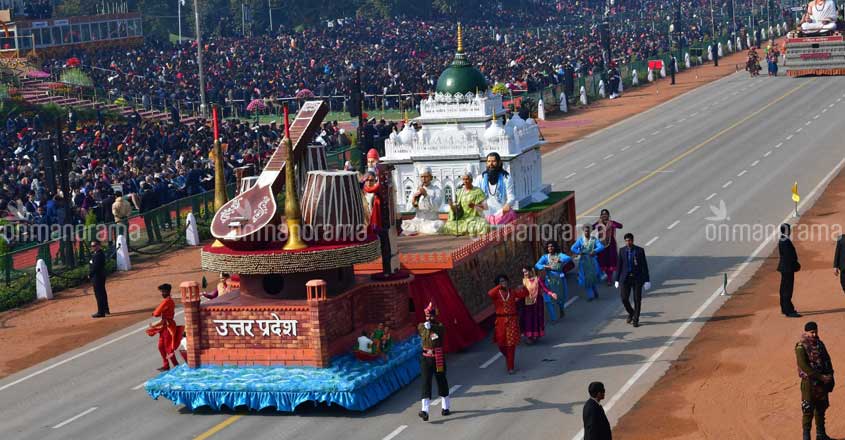
The 'Dhanush' gun system, commanded by Capt. Mrigank Bharadwaj, was part of the Republic Day celebrations at Rajpath for the first time on Sunday. The 155mm/45 Caliber Dhanush gun system is a towed Howitzer designed indigenously by the Ordnance Factory Board.
The gun with a maximum range of 36.5 km has the capability of automatic gun alignment and positioning.
The gun, which is equipped with inertial navigation system and advanced gun sighting system, has been designed to meet futuristic requirements of the Army.
(With PTI inputs)

